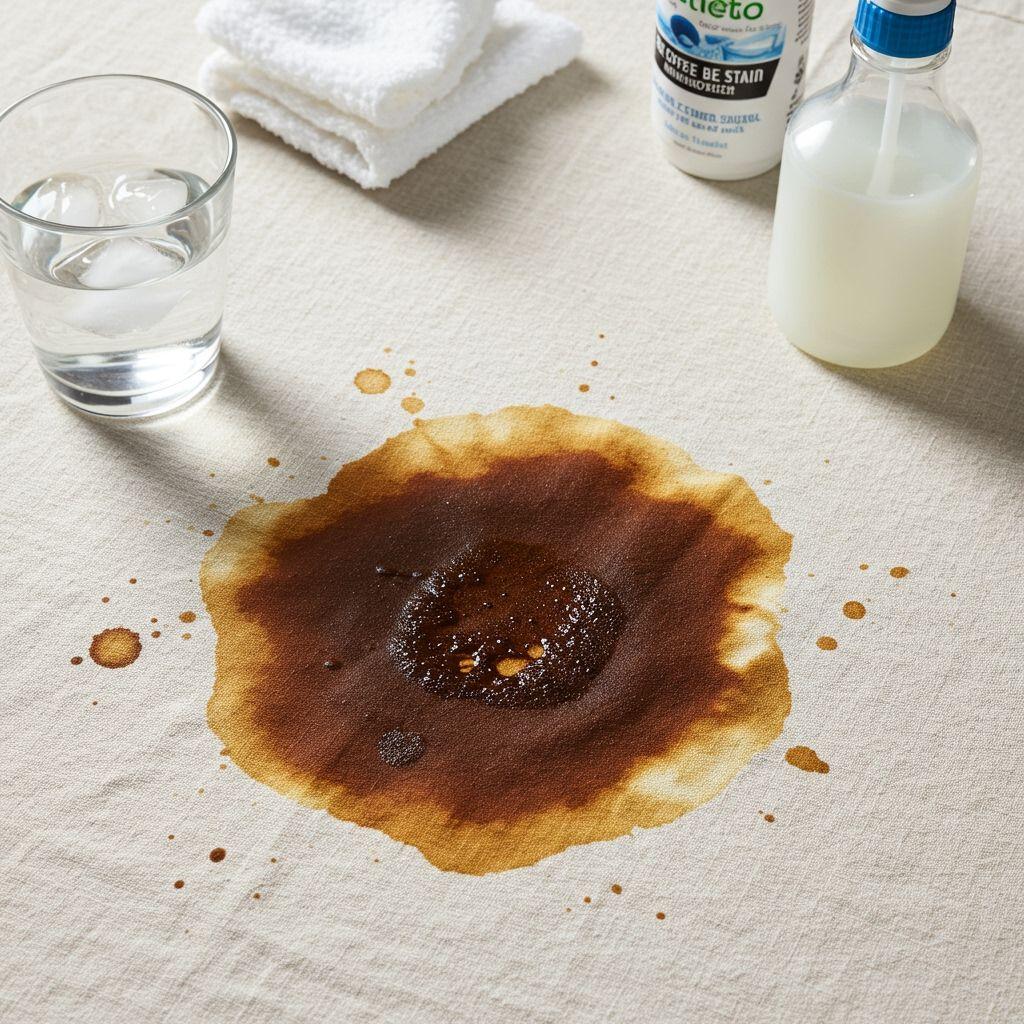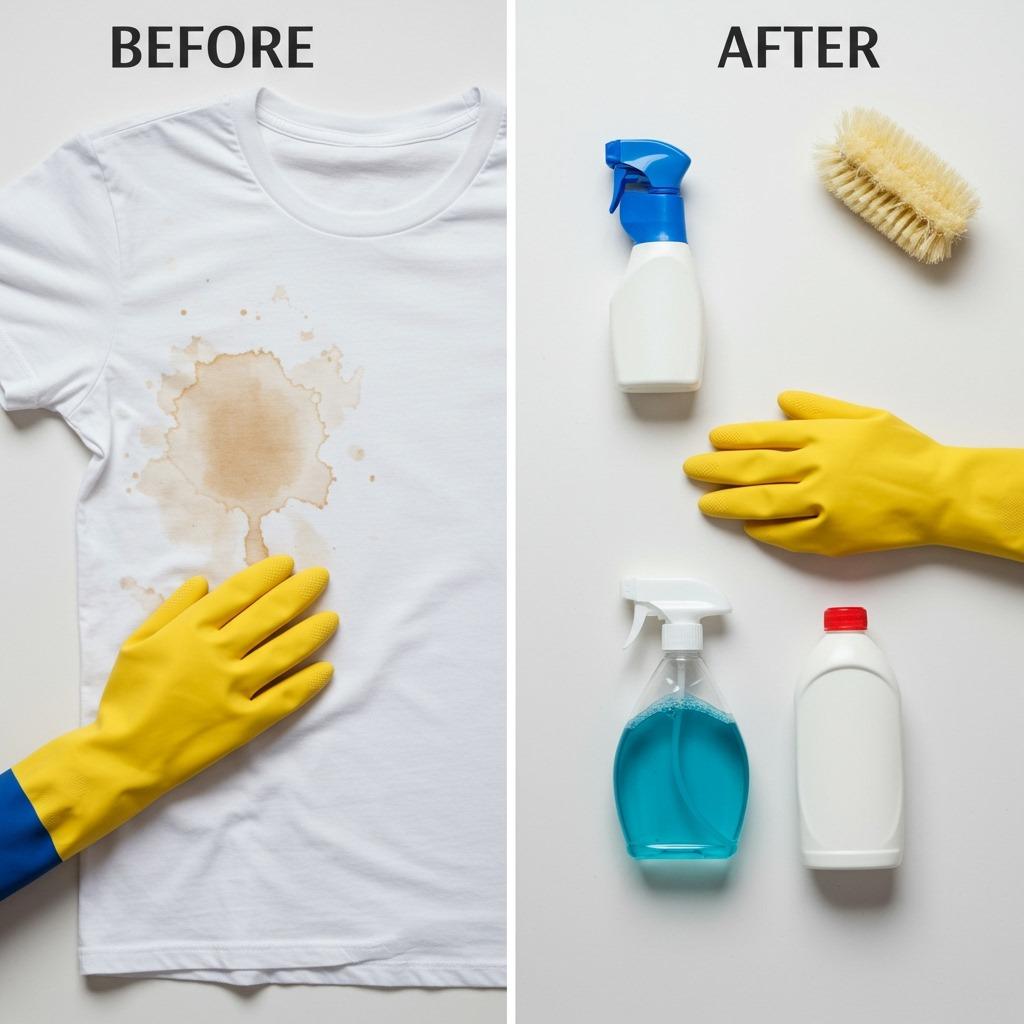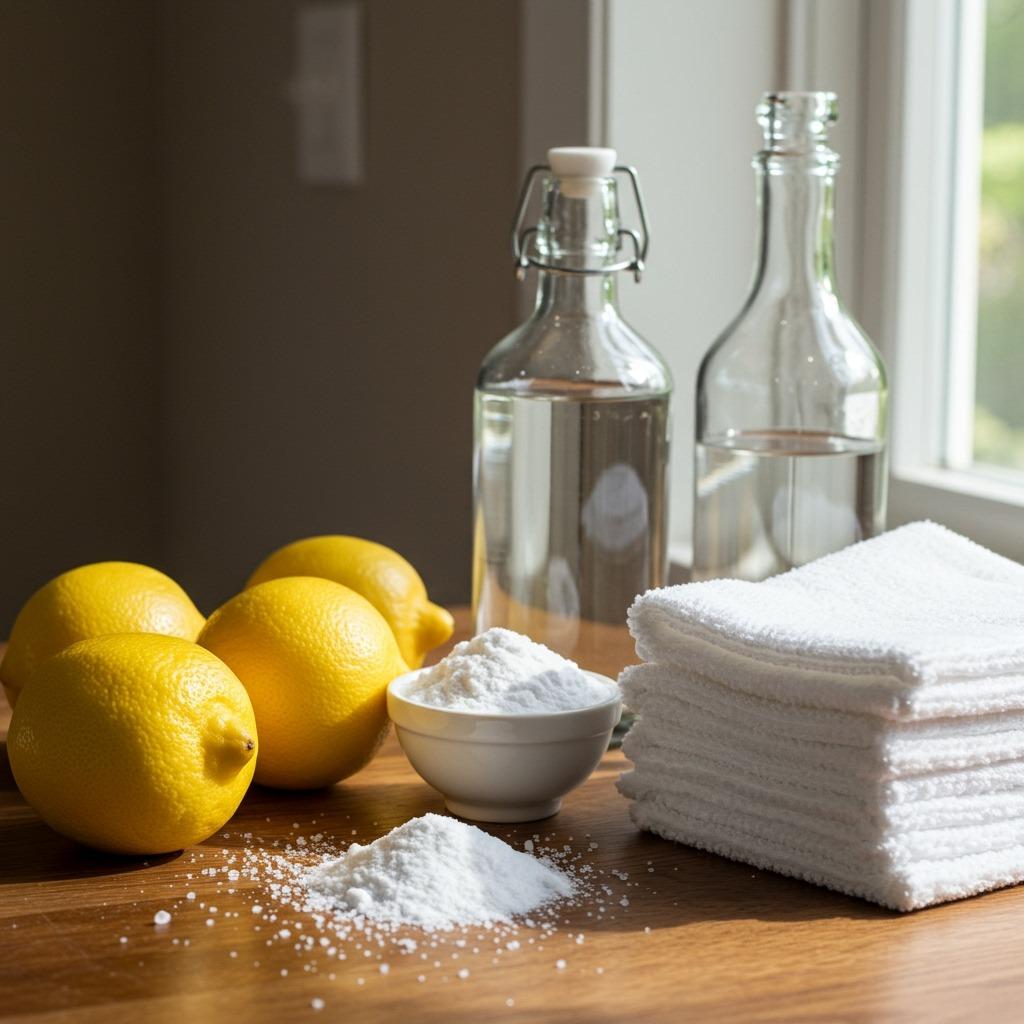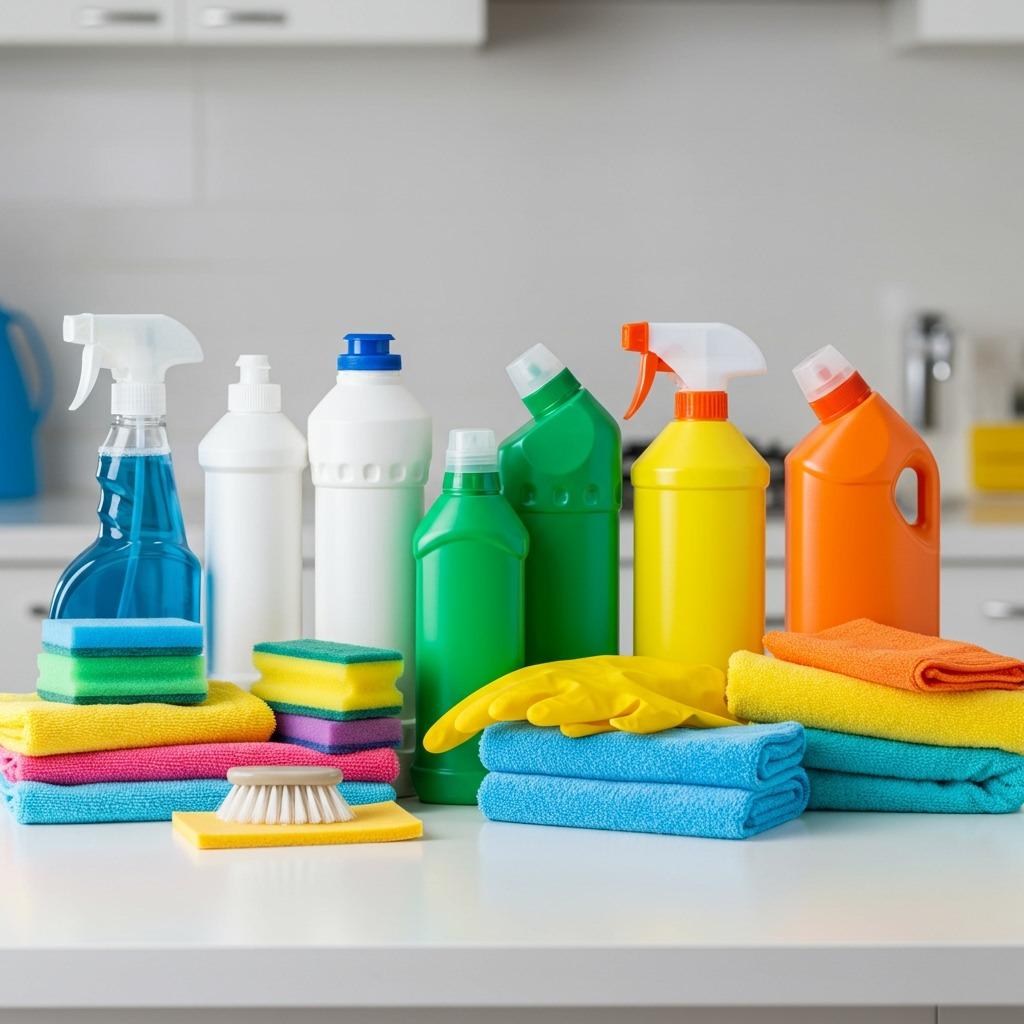The Morning That Almost Ruined My Favorite Shirt
There I was, rushing to make it to my early morning fishing trip, trying to down one last gulp of coffee before hitting the road. In my excitement to get to the lake before sunrise, I knocked over my nearly full mug, sending hot coffee cascading across my favorite flannel shirt—the one I’d worn on countless successful fishing adventures. For a moment, I thought my lucky shirt was ruined forever.
That panic taught me something valuable: knowing how to tackle coffee stains immediately can save your favorite clothes, furniture, and even your day. Since that morning mishap, I’ve become somewhat of an expert at coffee stain removal, helping fellow outdoor enthusiasts rescue everything from camping gear to car upholstery after those inevitable spills.

Coffee stains don’t have to be permanent disasters. With the right techniques and quick action, you can remove even the most stubborn coffee marks from virtually any surface. Whether you’re dealing with fresh spills or set-in stains that have been haunting your favorite items, this guide will walk you through proven methods that actually work.
Understanding Coffee Stains: Why They’re So Stubborn
Coffee stains present unique challenges because they contain tannins—the same compounds that give coffee its rich color and bold flavor. These tannins bind quickly to fabric fibers, carpet threads, and porous surfaces, creating what seems like permanent discoloration. The key to successful stain removal lies in breaking down these tannin bonds before they set permanently.
Temperature plays a crucial role in how coffee stains behave. Hot coffee penetrates deeper and faster than cold coffee, while hot water used incorrectly during cleaning can actually set stains permanently. This is why many well-meaning cleaning attempts fail—people reach for hot water first, thinking it will help, when cold water is actually your best initial ally.
Time is your most important factor when dealing with coffee stains. Fresh stains come out easily with simple techniques, while older, set-in stains require more aggressive approaches. The difference between a two-minute cleanup and hours of intensive treatment often comes down to acting within the first few minutes after the spill occurs.
The type of surface also determines your cleaning strategy. Clothing fabrics react differently from upholstery, carpets need different treatment than hard surfaces, and delicate materials require gentler approaches than sturdy cotton or synthetic blends.
Immediate Action: The First 60 Seconds Matter Most
When coffee first spills, your immediate response determines whether you’ll have a quick cleanup or a major stain removal project. These first steps work for most surfaces and buy you time to gather proper cleaning supplies.
Step 1: Blot, Don’t Rub
Grab the nearest clean cloth, paper towel, or napkin and blot the spill immediately. Press down firmly to absorb as much liquid as possible, but resist the urge to rub or scrub. Rubbing pushes coffee deeper into fibers and spreads the stain over a larger area.
Step 2: Rinse with Cold Water
For clothing and washable fabrics, run cold water through the back of the stain. This pushes the coffee out of the fabric rather than deeper into it. Hold the fabric taut and let water flow through for at least 30 seconds.
Step 3: Apply Gentle Pressure
Continue blotting with clean sections of your cloth, working from the outside of the stain toward the center. This prevents the stain from spreading while removing more coffee from the surface.
Step 4: Assess and Plan
Take a moment to evaluate what you’re dealing with. Is it a fresh spill on washable cotton, or has coffee soaked into expensive upholstery? Your next steps depend on the surface type and how much time has passed since the initial spill.
These immediate actions can remove up to 80% of fresh coffee stains, especially from clothing and non-porous surfaces. Even if you can’t complete the cleaning process immediately, these first steps prevent the stain from setting permanently.
Removing Coffee Stains from Clothing
Fresh Coffee Stains on Washable Fabrics
The Cold Water Method:
- Rinse immediately with cold water from the back of the fabric
- Pre-treat with liquid laundry detergent, working it in gently with your fingers
- Let it sit for 5 minutes to break down tannin bonds.
- Wash in the coldest water appropriate for the fabric.
- Air dry and check results before applying heat.
The White Vinegar Solution:
For stubborn fresh stains, white vinegar’s acidity helps break down tannins:
- Mix one part white vinegar with two parts cold water
- Soak the stained area for 30 minutes.
- Rinse thoroughly with cold water.
- Wash as normal in your machine.
- Check results before drying.
Set-In Coffee Stains
Older stains require more aggressive treatment but can often still be saved with persistence.
The Enzyme Treatment:
Enzyme-based stain removers specifically target protein and tannin stains:
- Apply the enzyme stain remover directly to the stain
- Work in gently with a soft brush or your fingers.
- Let it sit for the time recommended on the product label (usually 15-30 minutes)
- Wash in the warmest water safe for the fabric.
- Repeat if necessary before drying.
The Baking Soda Paste:
This gentle abrasive works well on white and light-colored fabrics:
- Mix three parts baking soda with one part water to create a paste
- Apply the stain and work in gently.
- Let it sit for several hours or overnight.
- Rinse with cold water.
- Wash as normal

Delicate Fabrics and Special Care Items
Silk, wool, and other delicate materials require gentler approaches:
For Silk:
- Blot immediately with cold water
- Mix one teaspoon of white vinegar in one cup of cold water.
- Dab gently with the solution using a clean cloth
- Rinse with clean cold water.
- Professional cleaning may be necessary for expensive items.
For Wool:
- Blot excess coffee immediately
- Rinse with cold water.
- Apply wool-safe detergent directly.
- Work in gently without stretching the fabric.
- Rinse thoroughly and lay flat to dry.
Removing Coffee Stains from Carpet and Upholstery
Carpet and upholstery present unique challenges because you can’t simply throw them in the washing machine. The key is working with the materials rather than against them.
Fresh Spills on Carpet
The Blot and Extract Method:
- Blot immediately with clean towels, applying firm pressure
- Mix one tablespoon of liquid dish soap with two cups of cold water.
- Apply the solution and blot, don’t rub
- Rinse by blotting with clean water.
- Dry thoroughly with fans if possible.
The Club Soda Technique:
Many outdoor enthusiasts swear by this method for emergency cleanup:
- Pour club soda directly on the fresh stain
- Blot with clean cloths, letting the carbonation lift the stain
- Rinse with plain water.
- Blot dry thoroughly
Set-In Carpet Stains
The Steam and Extract Method:
- Mix equal parts white vinegar and water in a spray bottle
- Spray the stain and let it sit for 15 minutes.
- Steam with a clothes steamer or iron held above the carpet
- Blot immediately with clean towels
- Rinse and extract with clean water.
Professional carpet cleaning may be necessary for valuable carpets or persistent stains. Sometimes the investment in professional equipment rental or service calls proves more cost-effective than repeated DIY attempts.
Upholstery Considerations
Always test cleaning solutions on an inconspicuous area first. Different upholstery materials react differently to cleaning agents:
For Microfiber:
- Blot immediately with cold water
- Use rubbing alcohol on a clean cloth.
- Dab gently at the stain
- Allow to air dry completely.
- Vacuum to restore texture
For Leather:
- Blot immediately without rubbing
- Clean with a leather-specific cleaner
- Condition after cleaning to prevent cracking
- Professional treatment for expensive pieces
Removing Coffee Stains from Hard Surfaces
Hard surfaces like countertops, tables, and car interiors often show coffee stains as rings or discoloration, especially on porous materials.
Wood Surfaces
Coffee rings on wood furniture can seem permanent, but several techniques can restore the original appearance:
The Iron Method:
- Place a dry cloth over the stain
- Apply a warm (not hot) iron for 10-15 seconds.
- Check progress and repeat if necessary.
- Polish with wood conditioner when finished.
The Mayonnaise Technique:
This unusual method works surprisingly well:
- Apply real mayonnaise to the stain
- Let’s sit for one hour.
- Wipe clean with a dry cloth.
- Polish as usual
Plastic and Laminate
These non-porous surfaces clean easily but can show stains if coffee sits too long:
Basic Cleaning:
- Wipe immediately with a damp cloth
- Use mild dish soap for stubborn stains.
- Rinse and dry completely.
- Apply plastic polish if needed.
For tougher stains, a paste of baking soda and water works as a gentle abrasive that won’t scratch most surfaces.
Advanced Techniques for Stubborn Stains
When basic methods fail, these advanced techniques can tackle the most challenging coffee stains:
The Hydrogen Peroxide Method
This powerful oxidizer works well on white and colorfast fabrics:
- Test on an inconspicuous area first
- Apply 3% hydrogen peroxide directly to the stain.
- Let’s sit for 30 minutes.
- Rinse thoroughly with cold water.
- Wash as normal
The Meat Tenderizer Trick
Unseasoned meat tenderizer contains enzymes that break down protein stains:
- Mix the meat tenderizer with cold water to form a paste
- Apply the stain and work in gently.
- Let’s sit for 30 minutes.
- Rinse with cold water.
- Wash normally
The Lemon and Salt Treatment
This natural combination works well on fresh stains:
- Sprinkle salt on the fresh stain
- Squeeze fresh lemon juice over the salt.
- Let’s sit for 10 minutes.
- Rinse with cold water.
- Wash as usual

Prevention Strategies for Coffee Lovers
The best stain removal technique is prevention. These strategies can minimize coffee spill disasters:
Travel Mug Selection
Invest in quality travel mugs with secure lids and non-slip bottoms. Look for features like:
- Leak-proof locking mechanisms
- Wide, stable bases that resist tipping
- Easy-grip surfaces that don’t slip when wet
- One-handed operation for safe drinking while active
Strategic Coffee Placement
Develop habits that reduce spill risks:
- Keep coffee away from electronics and important papers
- Use coasters on all surfaces, especially wood.
- Avoid placing full mugs near the edges of tables or desks.
- Set up dedicated coffee areas in cars and RVs.
Emergency Preparedness
Keep basic stain removal supplies readily available:
- Clean cloths or paper towels in cars, offices, and camping gear
- Small spray bottle with white vinegar solution
- Travel-sized stain removal pens
- Understanding of what cleaning supplies work for different materials
Special Situations and Unique Challenges
Coffee Stains in Cars
Vehicle interiors present unique challenges with mixed materials and limited access:
Fabric Car Seats:
- Blot immediately with paper towels
- Apply cold water sparingly (avoid soaking)
- Use automotive fabric cleaner.
- Extract moisture with a shop vacuum if available.
- Ventilate thoroughly to prevent mold.
Leather Car Interiors:
- Blot gently without spreading
- Clean with leather-specific products only
- Condition after cleaning
- Professional detailing for expensive vehicles
Coffee Stains on Electronics
Spilled coffee on laptops, keyboards, or other electronics requires immediate action:
- Power down immediately and disconnect from power
- Remove batteries if possible.
- Blot exterior surfaces only
- Professional cleaning for internal components
- Do not attempt to power on until completely dry.
Camping and Outdoor Scenarios
When camping, stain removal options are limited, but quick action still helps:
Immediate Field Treatment:
- Rinse with clean water from your supply
- Apply camp soap if available.
- Rinse again and hang to dry.
- Proper treatment when you return home
For serious outdoor enthusiasts, understanding how to stay organized while camping can help prevent spills through better camp setup and routines.
When to Call Professionals
Some situations require professional intervention:
- Valuable items like antiques or expensive furniture
- Large areas where DIY efforts would be time-prohibitive
- Mixed material items that require specialized knowledge
- Persistent stains that don’t respond to multiple treatment attempts
- Insurance claims where documentation matters
Professional cleaners have access to commercial-grade equipment and specialized chemicals not available to consumers. They also understand how different materials react to various treatments, preventing damage that DIY attempts might cause.
The International Institute of Cleaning and Restoration Certification provides standards for professional cleaning services and can help you find qualified technicians in your area.
Natural and Eco-Friendly Alternatives
Many effective stain removal methods use common household items rather than harsh chemicals:
Vinegar Solutions
White vinegar’s natural acidity breaks down tannins effectively:
- Mix equal parts vinegar and water for general use
- Use full strength for tough stains on colorfast materials.
- Always test on inconspicuous areas first.
- Rinse thoroughly after treatment.
Baking Soda Applications
This gentle abrasive and odor absorber works in multiple ways:
- Creates an effective paste when mixed with water
- Absorbs odors while treating stains
- Safe for most materials and surfaces
- Environmentally friendly and inexpensive
Salt Treatments
Salt’s absorbent properties make it excellent for fresh spills:
- Immediately absorbs liquid coffee
- Prevents spreading when applied quickly
- Combines well with lemon juice for enhanced effectiveness
- Safe for most surfaces
Environmental consciousness drives many people toward natural cleaning methods. These approaches often work as well as commercial products while reducing chemical exposure in homes and the environment. Organizations like the Environmental Protection Agency provide guidance on safer cleaning alternatives that protect both health and environmental quality.
Building Your Coffee Stain Emergency Kit
Assemble supplies before you need them for maximum effectiveness:
Basic Home Kit
- White cloths (cotton or microfiber)
- White vinegar
- Baking soda
- Liquid laundry detergent
- Enzyme-based stain remover
- Spray bottles for mixing solutions.
Portable Emergency Kit
- Travel-sized stain removal pens
- Small packets of salt
- Clean cloths or paper towels
- Small spray bottle with vinegar solution
- Wet wipes for immediate cleanup
Office/Car Kit
- Paper towels
- Wet wipes
- Small bottle of cold water
- Stain removal pen
- Clean cloth for blotting
Having the right supplies immediately available often makes the difference between easy cleanup and permanent staining. Like any emergency preparation, the key is having what you need before you need it.

Testing and Safety Considerations
Always test cleaning solutions on inconspicuous areas before treating visible stains. Different materials react differently to cleaning agents, and what works on one fabric might damage another.
Fabric Testing
- Choose an inner seam or hidden area.
- Apply a small amount of cleaning solution.
- Wait 24 hours for any delayed reactions.
- Check for color changes, weakening, or other damage.
Surface Testing
- Test on areas that won’t be visible if damaged.
- Start with the gentlest method possible.
- Work up to stronger solutions only if necessary.
- Consider professional consultation for valuable items.
Safety extends beyond material damage to personal health. Proper ventilation becomes important when using any cleaning products, and skin protection may be necessary with stronger chemicals.
Long-Term Care and Maintenance
Successfully removing a coffee stain is only the beginning. Proper follow-up care ensures the area doesn’t become more susceptible to future staining:
Post-Treatment Care
- Ensure complete drying to prevent mold or mildew
- Apply appropriate protectants (fabric guard, wood polish, etc.)
- Monitor the area for any delayed reactions.
- Document what methods worked for future reference.
Preventive Maintenance
- Regular cleaning reduces stain susceptibility.
- Prompt attention to any new spills
- Periodic professional cleaning for valuable items
- Understanding each material’s specific care requirements
When combined with other outdoor and home management skills like staying organized during camping trips, stain removal knowledge becomes part of a comprehensive approach to maintaining your gear and living spaces.
Frequently Asked Questions
Can I use hot water to rinse coffee stains?
No, hot water can set coffee stains permanently by cooking the proteins in the coffee. Always start with cold water, and only use warm or hot water after pre-treating the stain and ensuring it won’t set the tannins deeper into the material.
How long do I have before a coffee stain becomes permanent?
Fresh spills can usually be removed easily within the first few minutes to hours. After 24-48 hours, stains become much more difficult to remove but aren’t necessarily permanent. Even old stains can sometimes be removed with persistent treatment and the right techniques.
Will bleach remove coffee stains from colored clothing?
Bleach will likely damage or discolor most fabrics and should only be used on white, bleach-safe materials. For colored clothing, stick to oxygen bleach, enzyme treatments, or natural methods like vinegar and baking soda that won’t affect fabric dyes.
What’s the difference between enzyme cleaners and regular detergents for coffee stains?
Enzyme cleaners contain specific proteins that break down tannins and other organic compounds in coffee. Regular detergent works through surfactant action, but doesn’t specifically target the compounds that make coffee stains stubborn. Enzyme cleaners are generally more effective on protein-based stains.
Can I remove coffee stains from dry-clean-only clothing at home?
While some gentle methods like blotting with cold water might be safe, dry-clean-only garments should generally be taken to professionals as soon as possible. Home treatment risks damaging expensive fabrics or setting stains that professionals could otherwise remove safely.
Coffee stains don’t have to ruin your day or your favorite belongings. With quick action, the right techniques, and proper supplies, most coffee spills become minor inconveniences rather than major disasters. The key is understanding what you’re dealing with, acting quickly, and using methods appropriate for the specific material and situation.
Whether you’re at home, in the office, camping in the wilderness, or traveling on the road, knowing how to handle coffee spills confidently lets you enjoy your favorite beverage without constant worry about accidents. Practice these techniques, keep basic supplies handy, and remember that persistence often pays off even with challenging stains.
Most importantly, don’t let the fear of spills keep you from enjoying great coffee wherever your adventures take you. With these skills in your toolkit, you can handle whatever coffee catastrophes come your way and get back to the more important things—like planning your next outdoor adventure or organizing the perfect camping trip.
